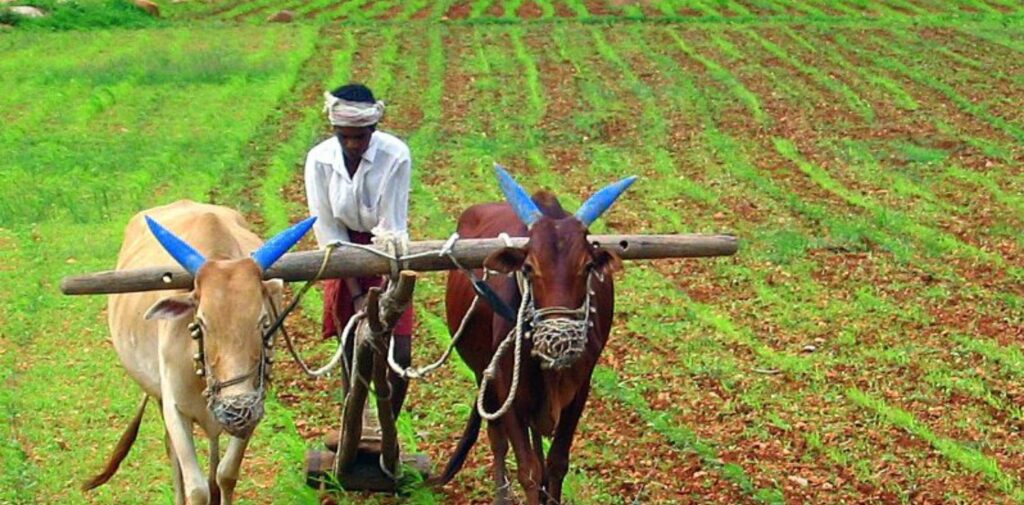India is a country known for its vast agriculture. From the early days of independence, agriculture has played a major role in the lives of people and the economy. After independence in 1947, India faced many challenges, including food shortages and hunger. The Green Revolution, which began in the 1960s, was one of the most important events in Indian history. It changed the way farmers worked and had a big impact on the country’s political landscape, especially for agrarian (farming) communities.
Let’s take a closer look at the Green Revolution and how it affected the political situation in rural India.
What Was the Green Revolution?
The Green Revolution was a series of changes in farming practices that introduced new technology and better farming methods. The goal was to increase the amount of food grown in India, particularly rice and wheat. It involved the use of high-yielding varieties (HYVs) of seeds, chemical fertilizers, pesticides, and modern irrigation techniques.
These changes helped Indian farmers grow more crops, leading to higher production. This was crucial because, before the Green Revolution, India often faced food shortages and depended on importing food from other countries.

How Did the Green Revolution Begin?
In the 1960s, India was struggling with food shortages. The population was growing rapidly, and traditional farming methods were not enough to feed everyone. At that time, scientists and agricultural experts, with help from international organizations like the Ford Foundation and the Rockefeller Foundation, introduced new farming techniques and seeds that could grow more food in less time.
The Green Revolution started in a few states, particularly Punjab, Haryana, and Uttar Pradesh, where the conditions were good for growing wheat and rice. Over time, these methods spread to other parts of the country.
Changes in Indian Farming Due to the Green Revolution
Before the Green Revolution, farming in India was mainly traditional. Farmers used local seeds, and irrigation was limited. With the Green Revolution, farming became more modern. Here are some of the major changes:
- High-Yielding Varieties (HYVs) of Seeds: These seeds produced more crops than traditional seeds.
- Use of Fertilizers: Farmers started using chemical fertilizers to make their soil richer and boost crop growth.
- Pesticides: Chemicals were used to protect crops from pests and diseases, helping to increase production.
- Irrigation Systems: More modern irrigation systems, like canals and tube wells, were introduced to provide water to crops more efficiently.
- Mechanization: Machines like tractors and harvesters began to replace manual labor in many areas.
These changes helped India produce more food, but they also brought some new challenges.
The Political Impact of the Green Revolution on Agrarian Communities
The Green Revolution had a big political impact, especially on agrarian communities. Let’s look at how it changed the lives of farmers and affected politics in India.
Changes in Power and Wealth Distribution
Before the Green Revolution, landowners in rural areas were usually the wealthy and powerful people. Small farmers and landless laborers struggled to make ends meet. The new agricultural techniques brought by the Green Revolution benefited large landowners the most. They had the resources to buy expensive seeds, fertilizers, and machinery.
This made the rich landowners even richer, while small farmers struggled to keep up. Those who had money could afford the new technology and improve their production, while poorer farmers could not. This created a divide between the rich and poor farmers in rural communities.
This shift in wealth and power led to political changes. The rich landowners gained more influence in politics, while poor farmers and laborers became more dissatisfied with their situation. Many of them felt left behind by the changes and started organizing protests and movements to demand better conditions.

Land Reforms and Farmer Movements
In response to the growing inequality in the countryside, many state governments introduced land reforms. These reforms were meant to reduce the power of big landowners and give more land to small farmers. In some states, these reforms were successful, and many poor farmers were given land. However, in other areas, the rich landowners found ways to avoid the reforms.
The Green Revolution also led to the rise of farmer movements. As some farmers benefited from the new technology and others did not, the gap between rich and poor farmers grew wider. This created unrest in the countryside, and farmer organizations started demanding better support for small farmers, fair prices for crops, and more government help.
These movements put pressure on the government to take action, and they also influenced political parties to pay more attention to the needs of rural communities.
Changes in Rural Politics
Before the Green Revolution, rural politics in India was largely controlled by a few wealthy landowners and local leaders. With the changes brought by the Green Revolution, political power in rural areas began to shift. As more farmers became involved in the Green Revolution, they started to demand better political representation and a bigger say in how agricultural policies were made.
In some areas, the rise of farmer organizations led to the creation of new political parties or movements that focused on the needs of the agrarian community. These new political forces sometimes clashed with the old power structures, creating tension in local politics.
The Role of the Government in Supporting Farmers
The government of India played a key role in supporting the Green Revolution, but the support was not always equal. The government provided subsidies for fertilizers and seeds, and it built infrastructure like irrigation systems. However, most of the benefits went to the richer, more advanced farmers who could afford the new technologies.
Many smaller farmers, especially in poorer regions, were left out of these benefits. The government’s inability to reach all farmers equally led to frustrations, especially among the poor farmers who felt that the government was favoring the rich. This contributed to political unrest in rural areas.
Positive Effects of the Green Revolution on Agrarian Communities
While there were some challenges, the Green Revolution also brought many positive changes to agrarian communities in India:
- Increased Food Production: The Green Revolution led to a significant increase in food production. India went from being a country that relied on food imports to a country that became self-sufficient in food grains.
- Reduction in Famine: As food production increased, the threat of famines in India reduced. More people had access to food, and hunger became less of a problem.
- Improved Infrastructure: The Green Revolution helped build better infrastructure in rural areas, including roads, irrigation systems, and power supplies, which made farming easier and more efficient.
- Economic Growth: The increase in food production also helped the economy grow. Farmers who adopted new technologies earned more money, and some of that wealth flowed into local economies.

Negative Effects of the Green Revolution on Agrarian Communities
Despite the positive changes, the Green Revolution also had some negative effects:
- Increased Inequality: The benefits of the Green Revolution were not evenly distributed. Rich farmers gained the most, while poor farmers struggled to keep up with the costs of new technology.
- Environmental Issues: The heavy use of chemical fertilizers and pesticides led to soil degradation and pollution in some areas. Overuse of water for irrigation also caused water shortages in some regions.
- Decline of Traditional Farming: Many traditional farming practices were replaced with modern methods, which led to the loss of old knowledge and farming skills.
Conclusion
The Green Revolution was a turning point in Indian agriculture. It helped increase food production, reduce hunger, and improve the lives of many farmers. However, it also brought challenges, especially for the poorer farmers who did not have the resources to take advantage of the new technologies.
The political impact of the Green Revolution was significant. It changed the balance of power in rural India, created new farmer movements, and led to shifts in the political landscape. The gap between rich and poor farmers became more noticeable, and this created tensions that continue to influence politics in rural areas today.
Overall, the Green Revolution had both positive and negative effects, and its legacy continues to shape Indian agriculture and politics. It shows how changes in farming practices can lead to far-reaching political and social consequences, especially for the people who depend on the land for their livelihood.




